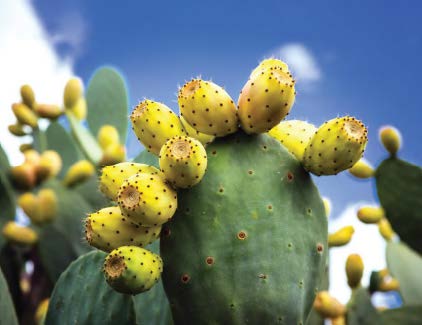Wild cacti such as red-flower pincushion (above) and yellow-blooming prickly pear (below) were rescued from a prairie pipeline construction rightof-way.

few early blue violets (Viola adunca) from an uncut corner of our hay field and carefully planted them in our sunny rose garden. The early blue trans-plants survived just long enough to bloom and set seed once, thereby ensuring the escape of their progeny. (The seedpods of the early blue explode, throwing the seed considerable distances.) In this case—probably abetted in their escape by ants— they made it 18 feet across our concrete driveway to a strip of lawn that our neighbor seldom mows. Now, every May, this strip of grass taunts us with its mass of early blues.

There will inevitably be failures in this kind of wild gardening. We have a fertile shade garden, which seems ideal for a ground cover of bunchberry (Cornus canadensis). So, twice we have saved plants from the construction of a shed on our boreal forest–aspen parkland ranch and planted them in our shady garden back home. Both times, they thrived for a spell and then expired for no obvious reason. Likewise, we failed with giant red Indian paintbrush (Castilleja miniata),
Photos, from top: Grand Canyon NPS/Wikimedia; ItalianFoodProduction/Getty Images